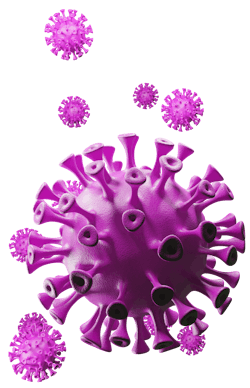NIH study finds that people with SARS-CoV-2 antibodies may have low risk of future infection
People who have had evidence of a prior infection with SARS-CoV-2 appear to be well protected against being reinfected with the virus, at least for a few months, according to a newly published study from the National Cancer Institute (NCI), as reported in a press release from the National Institutes of Health (NIH).
This finding may explain why reinfection appears to be relatively rare, and it could have important public health implications, including decisions about returning to physical workplaces, school attendance, the prioritization of vaccine distribution, and other activities, the NIH said.
For the study, researchers at NCI, part of NIH, collaborated with two healthcare data analytics companies (HealthVerity and Aetion) and five commercial laboratories. The findings were published in JAMA Internal Medicine.
"The data from this study suggest that people who have a positive result from a commercial antibody test appear to have substantial immunity to SARS-CoV-2, which means they may be at lower risk for future infection," said Lynne Penberthy, MD, MPH, Associate Director of NCI's Surveillance Research Program, who led the study. "Additional research is needed to understand how long this protection lasts, who may have limited protection, and how patient characteristics, such as comorbid conditions, may impact protection. We are nevertheless encouraged by this early finding."
The study was launched to better understand whether, and to what degree, detectable antibodies against SARS-CoV-2 protect people from reinfection with the virus. Working with HealthVerity and Aetion, NCI aggregated and analyzed patient information collected from multiple sources, including five commercial labs, electronic medical records, and private insurers.
The researchers ultimately obtained antibody test results for more than 3 million people who had a SARS-CoV-2 antibody test between January 1-August 23, 2020. This represented more than 50 percent of the commercial SARS-CoV-2 antibody tests conducted in the United States during that time. Nearly 12 percent of these tests were antibody positive; most of the remaining tests were negative, and less than 1 percent were inconclusive.
About 11 percent of the seropositive individuals and 9.5 percent of the seronegative individuals later received a nucleic acid amplification test (NAAT) – sometimes referred to as a PCR test – for SARS-CoV-2. The research team looked at what fraction of individuals in each group subsequently had a positive NAAT result, which may indicate a new infection. The study team reviewed NAAT results at several intervals: 0-30 days, 31-60 days, 61-90 days, and greater than 90 days because some people who have recovered from a SARS-CoV-2 infection can still shed viral material (RNA) for up to three months (although they likely do not remain infectious during that entire period).
The team found that, during each interval, between 3 percent and 4 percent of the seronegative individuals had a positive NAAT test. But among those who had originally been seropositive, the NAAT test positivity rate declined over time. When the researchers looked at test results 90 or more days after the initial antibody test (when any coronavirus detected by NAAT is likely to reflect a new infection rather than continued virus shedding from the original infection), only about 0.3 percent of those who had been seropositive had a positive NAAT result -- about one-tenth the rate in those who had been seronegative.
Although these results support the idea that having antibodies against SARS-CoV-2 is associated with protection from future infection, the authors note important limitations to this study. In particular, the findings come from a scientific interpretation of real-world data, which are subject to biases that may be better controlled for in a clinical trial. For example, it is not known why people who had tested antibody positive went on to have a PCR test. In addition, the duration of protection is unknown; studies with longer follow-up time are needed to determine if protection wanes over time.

